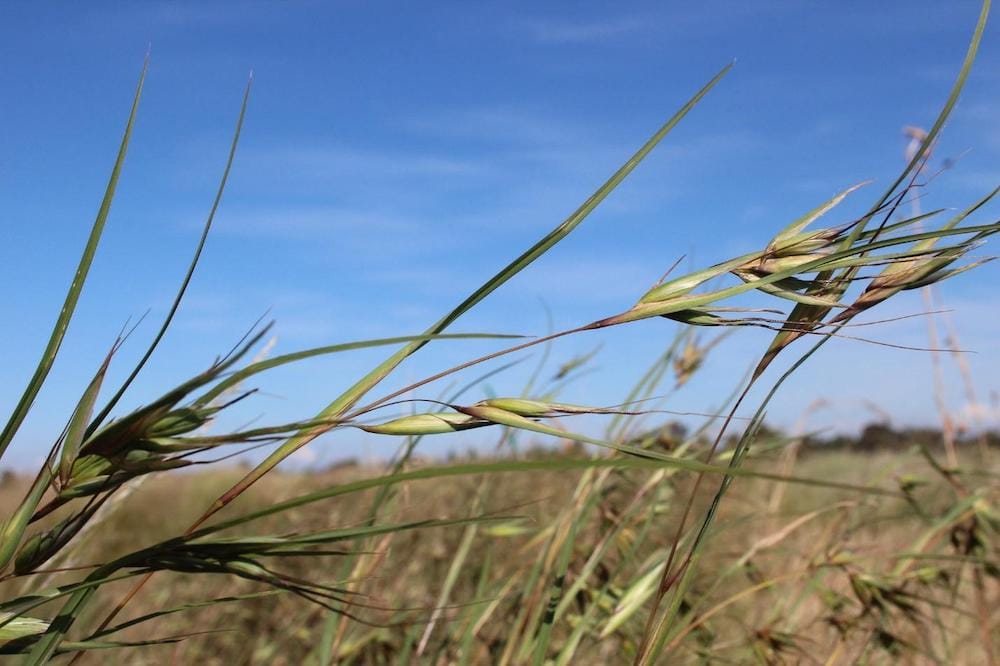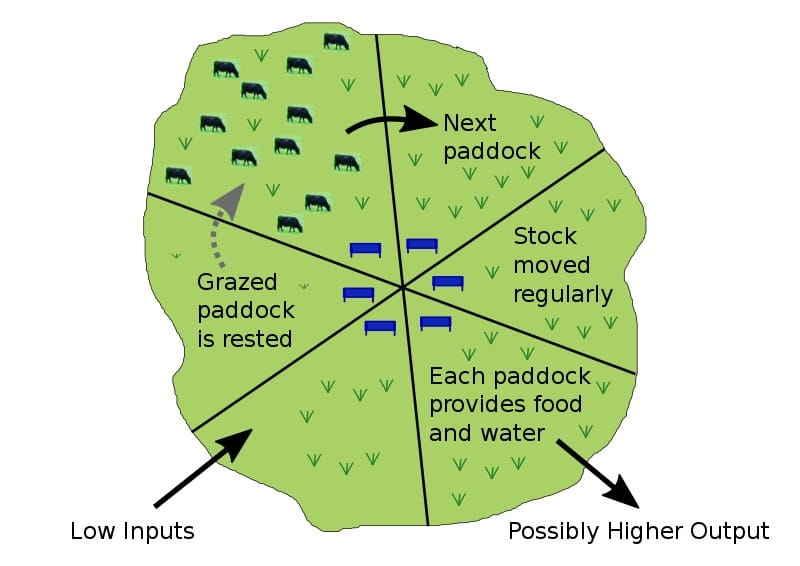Article Summary:
Farms like yours across the globe have developed various grazing strategies to best suit their needs. One such strategy is deferred grazing which puts some paddocks out of rotation to achieve growth targets and increase profitability. Deferred grazing restores the soil seed reserves, ground cover, tiller density, soil fertility, etc. To make the most of your flourishing pasture, learn the benefits of deferred grazing today!
Every region of the world has native species of grasses that have evolved throughout millions of years with varying grazing practices.
These native species are well adapted to the region’s varying climate and soil type. They also provide nutrient value similar to introduced species. Native species play a crucial role in maintaining the health of the ecosystem. However, these qualities fade in comparison to adopted grass species.
The downside to native grasses is their diverse genetic traits, lower seed yield, and long periods of flowering.
To overcome the shortcomings of native perennial grasses, deferred grazing is gaining popularity. Deferred grazing has proven results of increasing farm profitability, gross margins/hectare, by a whopping 8%.
In this article, we will discuss deferred grazing and its benefits to native pastures. We will also discuss the ways to defer a paddock and the conditions for making the most out of deferring. Finally, we will lay down the results of deferring a paddock.
Let’s get started with why native pastures need deferring.

Why Native Pastures Need Deferred Grazing?
Overgrazing native pastures under set-stocked grazing result in less ground cover and may lead to plant death, especially when plants are moisture-stressed. To make it worse, a low population of perennials encourages weed invasion. There are three ways to restore native pastures;
- Ensure seed production of native grasses and recruit new native grasses in the list
- Increase the potential of existing native grasses
- Ensure strong competition of native grasses.
Pasture management ought to adopt strategies that promote and restore native pastures. One such method is deferred grazing.
During mid-summer, the ground cover remains more than 70%. Rotational grazing in late summer and early autumn reduces ground to cover dramatically. It increases again after rainfalls in late –autumn. On the other hand, the ground cover remains higher with deferred grazing.
Deferred grazing limits the grazing during summer and thus increases the perennial native grass population.

What is Deferred Grazing?
Deferred grazing is a grazing strategy that aims to maintain pasture quality from spring to early autumn. Under deferred grazing, some paddocks are put out of rotation. This step optimizes grazing pressure on the remaining paddocks and maintains pasture quality. In deferred paddocks, species like ryegrass and legumes are allowed to seed.
This results in a high seed bank the following autumn, new tillers are produced and pastures are restored.

What are the benefits of deferred grazing?
Deferred grazing has multiple benefits.
- It increases the tiller density of perennial grasses.
- Pasture growth has been recorded to increase after deferring.
- It results in the provision of high-quality feed at the end of the summer.
- Areas prone to drought have been witnessed to benefit by deferred grazing as it provided valuable feed at the end of summer.
- Deferred grazing helps maintain pasture quality in the rest of the paddocks.
- Indirectly, it leads to increased livestock growth and ultimately, more profits for the farm.
- It helps farm management proactively manage pastures and introduces flexibility.
- Farms with a spring surplus get more benefit by deferring some paddocks as it eases the management.

How to set up a paddock for deferred grazing?
- Setting up deferred grazing for a paddock requires fulfilment of certain conditions. Deferring a paddock will put it out of rotational grazing for mid-spring and summer till early autumn. Below are the tips to select a paddock to defer.
- Defer only 10-15% area of the farm.
- Observe the performance of ryegrass. If ryegrass is not doing well, it’s the right paddock to defer.
- It is better to select a paddock that was not deferred in the past few years.
- Ensure that chosen paddock is not a breeding ground for weeds.
- Choose a paddock that has highly fertile native pasture species, like ryegrass and clover.
- Monitor pasture cover for surplus. Defer some pastures if the surplus is more than farm management can effectively utilize.
- The right time to defer a paddock is when the seed head is emerging till after seed head drops, from mid-spring to early autumn.
- Put the paddock back into rotation grazing by cattle or sheep. Pasture utilization would be less; ~ 50%
- Do not heavily graze deferred paddocks after they are put back into the rotation. Graze them lightly before the winter. Treat them like new paddocks.
- Pick different paddocks for deferring every season.

What are the results of deferring a paddock?
Deferring grazing has been observed to increase pasture productivity and performance as compared to rotational grazing.
- It increased the ryegrass ground cover and tiller density significantly.
- It enhanced the topsoil moisture in summer. It was effective in dry and drought-prone areas.
- It increased the amount of nitrogen available for the plant
- It reduced weed content and infestation.
- It decreased facial eczema spore count.
- During the deferred period, there is a reduction in the nutritive value of the paddock. However, this temporary decline does not affect the farm’s profitability in the long run.
- The root mass of grasses is much higher in deferred paddocks.
- On one farm, for 15% deferred area, there was an 8% increase in gross margins/hectare.
- During the deferred period, the growth of grazed paddocks was higher. However, after the deferred period, the growth of deferred paddock was higher. Deferring a paddock alters the timing of feed supply, not the total production of pasture.
- The post-grazing target for a deferred pasture ought to be 1500 kg DM/ha.
- If the feed is needed, deferred paddocks can be grazed in late summer. However, for the best results, wait until early autumn.
- Deferred paddocks were recorded with higher soil moisture as compared to rotationally grazed paddocks.
Deferred grazing is gaining fame for the flexibility it yields in pasture grazing management and optimum feed supply. With proven results and benefits, farms that are drought-prone can enhance paddock performance and productivity. This brings us to the end of the article.
Until we meet again, Happy Deferred Grazing!
- The Dedicated Team of Pasture.io, 2022-01-26